'Wet Hot American Summer' DP Kevin Atkinson: 'Often, the Laugh Can Come from a Camera Move'
'Wet Hot American Summer: Ten Years Later' DP Kevin Atkinson says keeping prepared and staying present is often the key to capturing the perfect comedic moments.
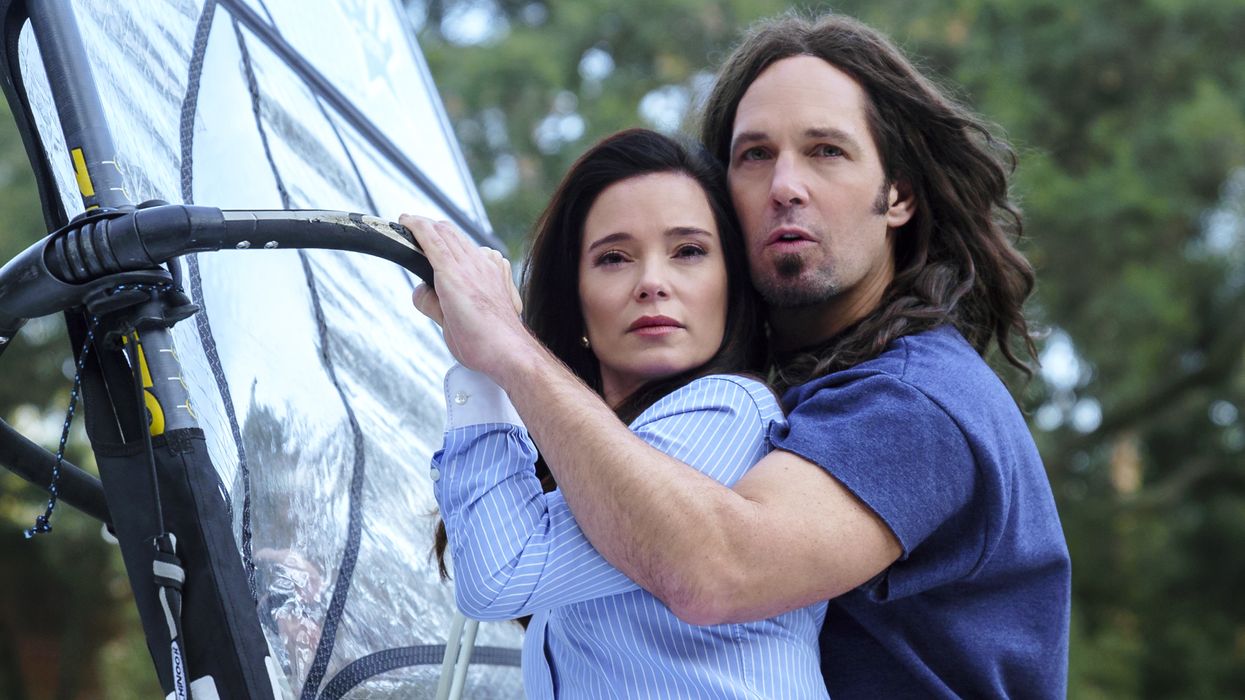
In an era where both the franchise and the spoof are dying, Wet Hot American Summer has transcended both. In collaboration with Netflix, the summer camp comedy has transitioned from cult classic film to prestige streaming show. With countless stars and an unending stream of self-referential and meta-humor, audiences have quickly latched onto the hilarious comedy.
Wet Hot American Summer: Ten Years Later arrives on the heels of the prequel series, First Day of Camp, telling the story of the same familiar camp counselors— only now they’re in their mid-20s and looking to rediscover themselves. Much of the original star-studded cast returns, including Amy Poehler, Paul Rudd, Elizabeth Banks, Molly Shannon, and Christopher Meloni, and with the addition of newcomers such as Mark Feuerstein, Alyssa Milano, Jai Courtney, and Skyler Gisondo, the new season continues to build on the canon that creators David Wain and Michael Showalter have conceived.
"We had all three cameras on Kristen Wiig with no rehearsal or anything. It was just 'action!' and she does that dance, and the magic was immediate."
With much of the First Day of Camp crew returning, there was a great deal of familiarity in the setup for director of photography Kevin Atkinson. As the engineer of the story’s “summer camp feel,” Atkinson sought to build off of his previous work in order to maintain the tone of the season’s predecessors. A longtime collaborator with Wain and the Funny or Die brand, Atkinson has an extensive history of shooting comedy. He sat down with No Film School to give insight into his process, including how to be adequately prepared, sacrificing looks for laughs, and a trick or two he uses to keep lighting setups simple.

No Film School:You’ve got a background teaching at some prestigious film schools, but what was your education like as an aspiring cinematographer?
Kevin Atkinson: I think the best way to teach oneself is just to go out and do it. If you want to be a DP, you have to learn from practicing your craft. You may have to suffer for it because you’re going to get paid less and you’re going to work worse jobs for longer hours, but I think it's the only way to get good at it. I was in the inaugural class at the Los Angeles Film School, which offered a lot of benefits because they wanted to take care of us. We had instructors come through who would encourage you to go out and shoot, shoot, shoot—which we did, and it was fantastic.
"Sometimes, it's you against the set because you are asking for a shot that nobody else wants. That’s what it takes."
Outside of formal education, I think any life experience can contribute. My first job was a line cook in my teens. I was flipping omelettes in a very busy breakfast place. It forced me to look nine or 10 orders down and get the prep for those going as I was flipping my current omelette. I see this as a metaphor for working sets as a cinematographer. You’re working on your current set-up, but also looking down the road toward your next three or four set-ups in order to keep the pace. Everybody appreciates a cinematographer who’s fast and who has a fast team.
NFS:What’s your key to being fast?
Atkinson: Being very, very prepared. That, and being flexible—ready for change.
NFS:Given how many people are involved in Wet Hot American Summer, I’m sure that speed is essential. How did you get involved with the franchise, shooting both First Day of Camp and Ten Years Later?
Atkinson: I met David Wain on Children’s Hospital. We shot a couple of really fun episodes together, and he kept having me back to shoot more projects, which led to Wet Hot American Summer. When he called me, I was super excited to do it, but it was also a little bit daunting.
For First Day of Camp, the game plan was to go for the look of the original movie—to pay homage to it in a more modern way—but with digital cameras. One way we did that was by putting Coral 1/2 and Coral 1/4 filters in the matte box to warm things up. I like giving the sensor a nudge in that direction before we get into a color correction suite. I think it helped in pursuing the "summer camp" feel.
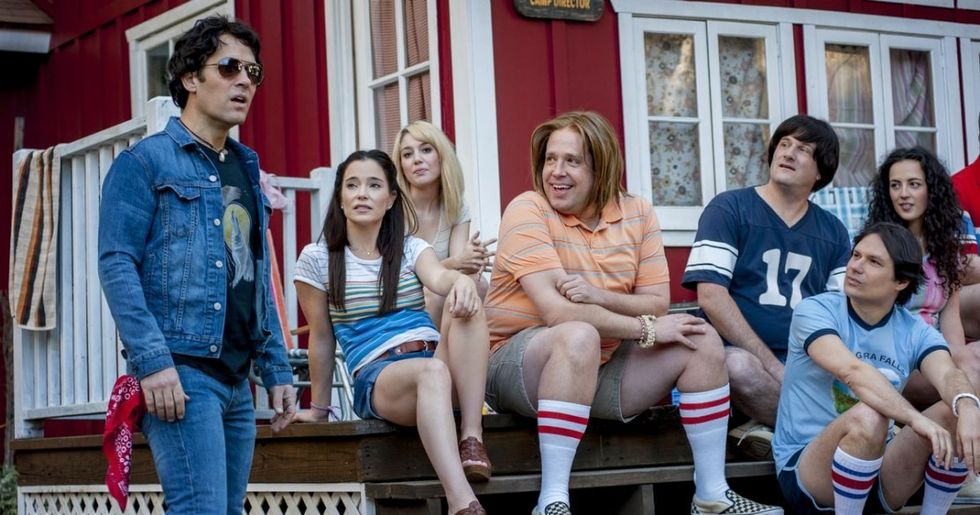
NFS:When you’re creating that feeling, how do you try to balance homage versus putting your stamp on the show?
Atkinson: I wasn’t ever really trying to put my stamp on it. I would only get in the way. I love world-building, so I was just trying to create a really fun world. It’s escapism for the audience and also a bit for me.
"I would have a 4x4 Kino Flo and a 1K and Jim Carrey staring at me, singing a hee-haw song over and over."
I did a lot of work for Funny or Die during their golden era. They were doing a lot of productions with A-list celebrities, and that would force my hand on sets in developing a style. I would have a 4x4 Kino Flo and a 1K and Jim Carrey staring at me, singing a hee-haw song over and over.
The setups often felt like they were a house of cards. It had to be good without the resources, so I learned to use everything: new white ceiling in the barn for Ten Years Later? Great! Let’s bounce light into it. In the end, I think that really contributes to my methodology in shooting comedy. Look at what is in front of you and use everything to increase the red button record time and get as much coverage as possible.
NFS: Would you say speed and coverage are the keys to capturing comedic moments?
Atkinson: Yes, most definitely. Over the course of almost 20 years of shooting now, there have been times in which I’ve shot projects that looked really good, but they're so boring that nobody wants to watch them. So the logical conclusion is to go for the laugh. If the look takes a hit because you’re using three cameras at once or shooting on the fly and spinning around without really lighting it that well, then that’s the case. Sometimes you just have to let it go. If it’s that one-second shot that will get a laugh, then it’s worth going for it, even if it’s not the best look.
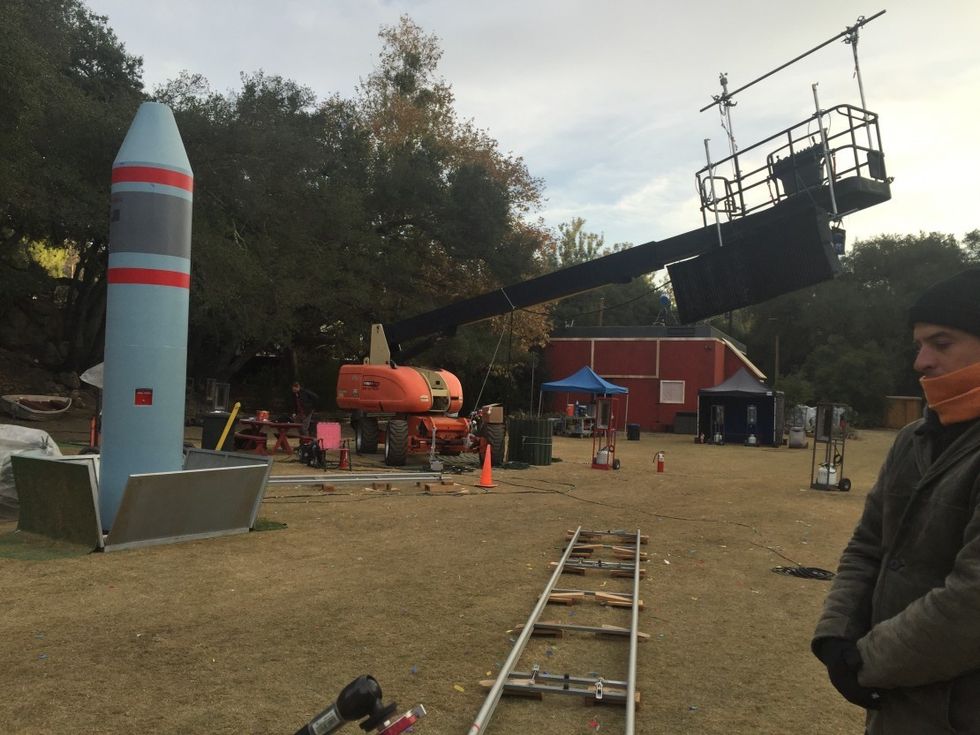
Atkinson: For example, with Ten Years Later, we had a lot of machinery that could have slowed us down during the finale sequence. We had a Technocrane on a Raptor base, we had a few lifts out there, and then we also had a condor for lighting and fly swatting. The field at Calamigos in Malibu where we shot isn’t that big, so we had to figure out where to land all this stuff so I could get 270-degree coverage and still make people look decent.
"I’m not a fan of lighting exteriors, especially for comedy."
That worked out to a degree. I would still like to have that finale look a little better, but the cast dictates a shooting schedule in which we’ll have three people for a day, and then you’re going to shoot the reverse shots three and a half weeks later. There’s one scene we did in the restaurant at the end where we went back seven times, and for a wide, we just composited it using green screens.
NFS:So what was scheduling like with so many massive stars?
Atkinson: We scheduled it like a movie, and I have to give credit to our first AD, Ryan Traylor. He’s a genius. I think we had 273 pages of script—it’s just like a four-hour feature. The way you would work on-set is that you’d get your sides that day and you’d be in a cabin, you’d be shooting scene 46, and then right after you’d be shooting scene 173. A lot of times that contributed to our speed on set. We didn’t really have to shake up lighting too much because that next scene is five episodes later.
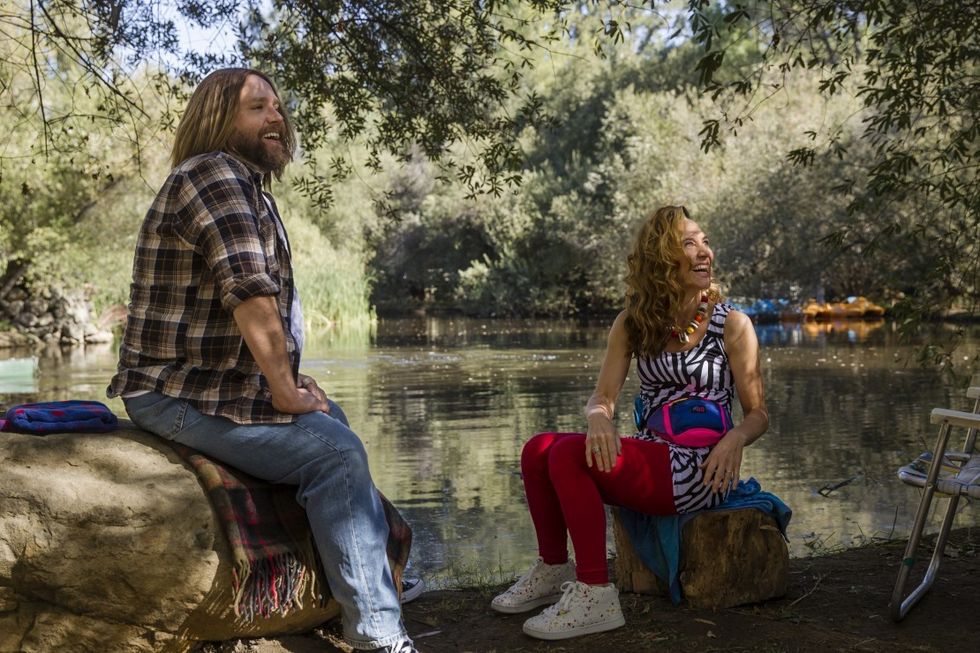
Atkinson: The cabins weren’t hard. It was actually relatively easy to rig to the rafters and then to pull down when we were doing low angle shots. I like taking a Leeko and sending it into white over the actors' heads. The beam itself isn’t hitting anything until it connects with the white, and then you get the return, which makes it easy to do some off-side lighting. I learned that from my friend Justin Duval, who gaffed Season One but has now moved on to shooting Superstore. At one point, one of the executive producers on this project asked me why we didn’t just open the windows since we were in a beautiful setting. He wasn’t wrong, but it was just that having the fabric over the windows allowed us to shoot a little bit faster. The fabrics hid light stands and Distro Boxes, etc.
"I’d rather shoot Alexa, but Netflix doesn’t allow it."
Our lighting approach was basic. We used traditional HMIs outside for daylight and for some night work, like emulating the nuclear blast. I’m not a fan of lighting exteriors, especially for comedy. I don’t really get out big guns and throw them through or into big rag sources, just because I find it cumbersome. I’d rather be able to turn around and shoot that direction in six minutes, as opposed to putting a small lift in somebody’s face. I prefer to do it passively. I’ll encourage the grips to get out there, and we’ll bounce and fill that way.
Inside, we just lit with mostly Tungsten units. Our gaffer, Lee Spencer, was amazing when it came to staying ahead of the game. Rocky Ford, our Key Grip, was the same. We would get so many curveballs thrown at us during the work week, we just started calling it the Chuuway Wet Hot way.
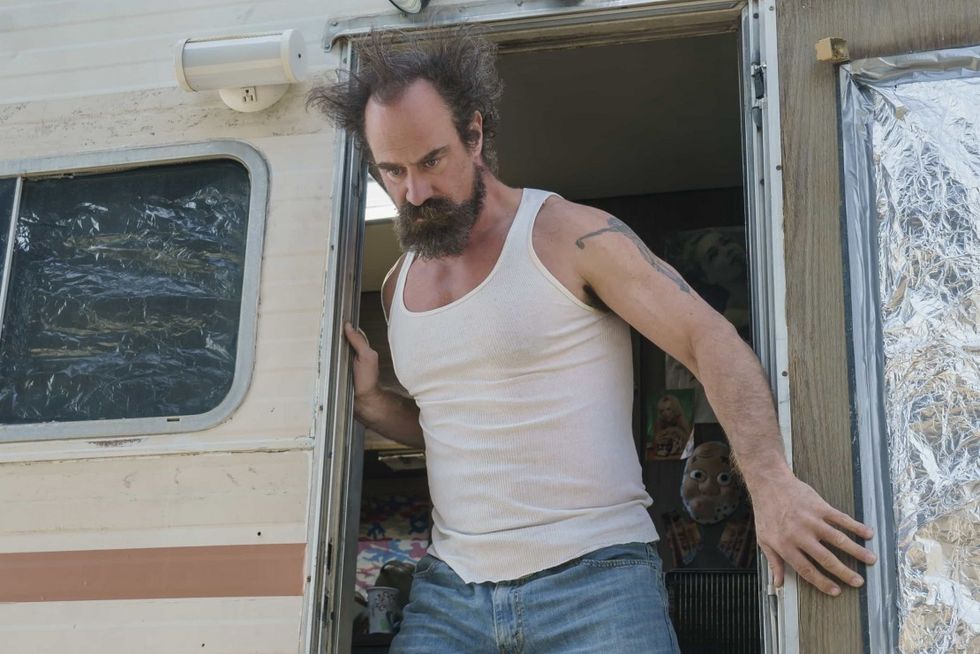
NFS:What camera did you shoot on?
Atkinson: When we shot First Day of Camp, we used the Sony F55. It shoots 8.3 gigs per minute when shooting 4K RAW, so when you have three of those going, you’re shooting almost 30 gigs a minute, which is insane. It’s a lot. But what it offers is a rich color space codec, which I really like.
When Ten Years Later came around, we were considering all different kinds of options, but Netflix has this imperative that you need to shoot 4K. We were considering the Panasonic and the new Panavision camera, which we couldn’t afford, and I’m not a particularly big fan of RED. I’d rather shoot Alexa, but Netflix doesn’t allow it.
"You have to know the lines and understand the bit. Often, the laugh can come from a camera move."
In the end, we settled back in on the F55. Even though it’s a few years older, it still holds up. We did get the new R7 back, which allowed us to shoot a higher frame rate at 4K RAW, and our 1st AC Gabe Diniz informed us that we were the first show to use it.
NFS:I wanted to ask about a couple of specific sequences, too. The King of Camp set piece was one that was really fun.
Atkinson: We mapped that out a bit. The weekend before, I asked David to flip the whole thing because the initial setup would have had us looking at the cabins, but it was opposite of what the sun was doing and would have been flat light our entire morning of shooting. He immediately flipped it, which made it all work.
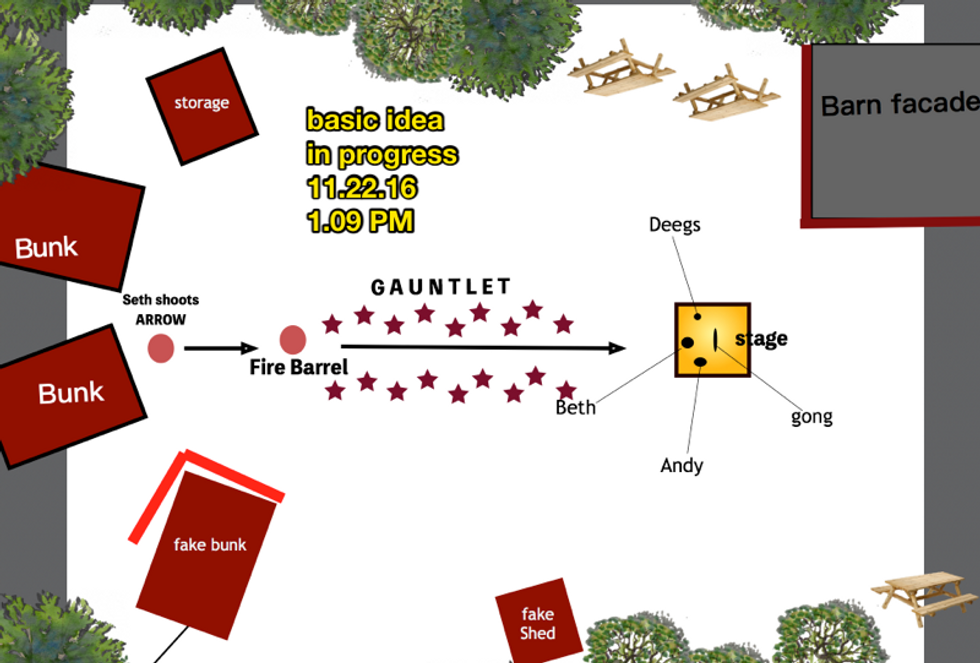
Atkinson: We got that great flair behind Janeane Garofalo’s head during her speech, and it gave the sequence a little more love. My initial concern, though, was the boom shadow from the gib shot that pulls up and back at the beginning of the race. We ended up placing the base of the gib very carefully and doing a sun pass that allowed us to make a plan that worked very nicely. That whole opening sequence for King of Camp was just a mad scramble, and we didn’t even have Paul Rudd that day.
NFS: How involved were you in planning the bits with the can of vegetables running around?
Atkinson: When I first read that in the script, I was curious how we were going to do it. David said it wasn’t going to move even though it was scripted to travel. He had planned on doing it all in cuts. But then we kept on creeping up on the shoot day in our schedule, and I started fishing for details, and eventually, we concluded that the can of vegetables is going to move.
"We got a 4K DJI Osmo and put it on a stick and chased him down the forest."
We got a 4K DJI Osmo and put it on a stick and chased him down the forest. It worked well with its stabilized head. There also was a waterfall on the ranch at Calamigos, so we got the can hitting the water there, and then planned to couple that with a stock shot. The guys doing the practical effects were great—they got the can talking in the river!
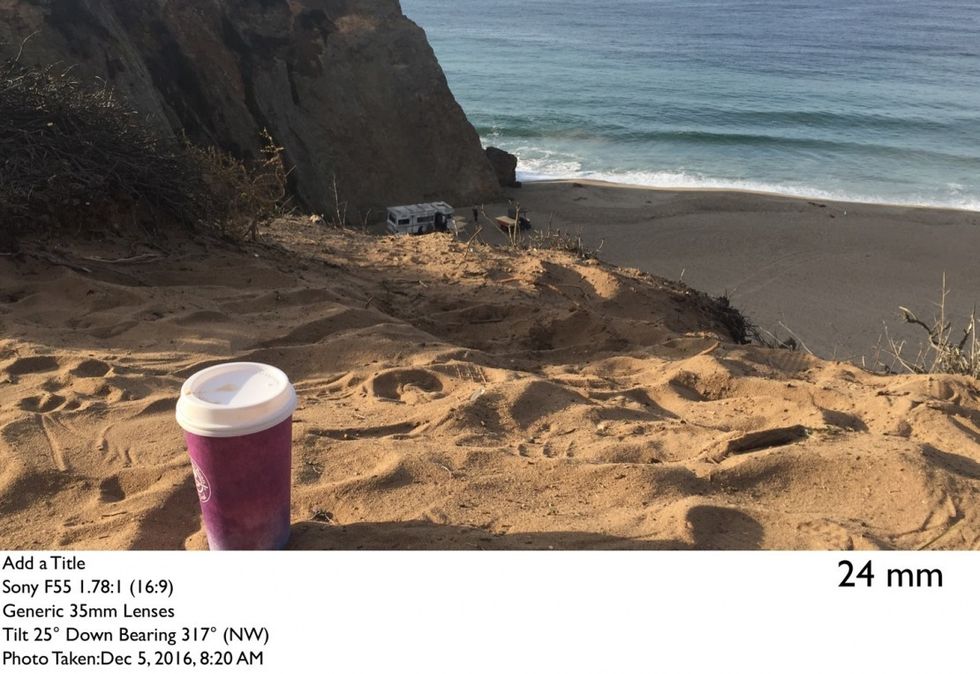
NFS: One of the other things you have this season is that Zack Orth’s character is shooting with an old-school handheld video camera.
Atkinson: During pre-production, I asked David what we were going to do about that, and he wanted to shoot Hi-8, which was exactly what I was hoping. I searched on eBay for a camera that would function well, and I found an old Sony engineer, who had taken apart this camera from the early 1990s and refurbished it completely. I bought it immediately.
Then there was the tape stock question. There’s lots of tape stock out there, but it’s all 30 years old, so you’re just going to have to trust it. And Technicolor wasn’t happy about it at all. [Laughs]. They wound up buying a deck and then blowing this Super 8 footage up into 4K. I’m really glad we went that way because it was authentic and fun. We’d do everything practical when shooting with Zak Orth and often times he would shoot the scene. He did a great job as our D-Cam Op. We also did playback right there into that old TV after scrambling around for some RCA cables. Simple as can be!
"It’s very important to be a good editor. You need to edit narratively on you own projects to understand how a good sequence comes to life."
NFS:You’ve shot all sorts of different projects, from digital to TV to documentaries to features. How much do you try to blend different strategies that you might pick up while shooting different mediums?
Atkinson: It all crosses over. Whether it’s just watching human beings and how they move, or how different faces require different lighting, or pulling your focus...you start getting good at improvising in the moment because you’ve seen a version of it before.
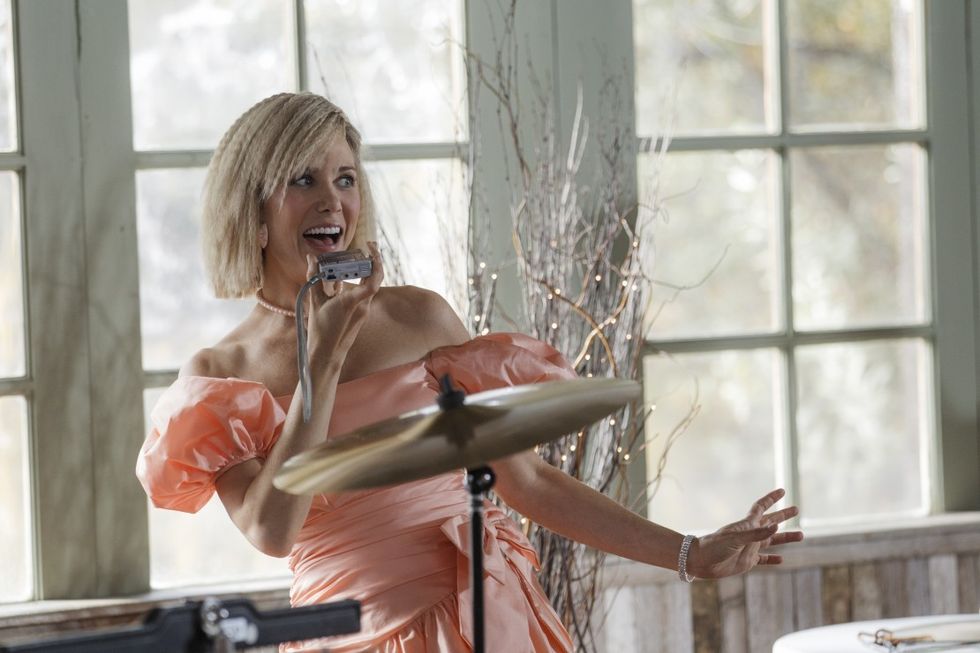
Atkinson: It’s very important to be a good editor. You need to edit narratively on you own projects to understand how a good sequence might come to life. You are in charge of the edit on set. If you’re not mindful of that, you’re not really going to get it in the moment, and sometimes that’s hard to do. Sometimes, it's you against the set because you are asking for a shot that nobody else wants. But sometimes that’s what it takes.
NFS:Do you operate your own projects?
Atkinson: I operated recently on Popstar and a few other projects, but when I’m the DP, I don’t like operating. I like being on the monitors. I hate not knowing what happened in the A-camera and having to go again when I could’ve fixed the issue on the radio while watching it. And you really have to concentrate on the job as an operator, especially in comedy. You have to know the lines and understand the bit. Often, the laugh can come from a camera move. I have to give credit to our A-Cam op Neal Bryant and our B-cam Op Frank Barerra for fundamentally understanding that notion.
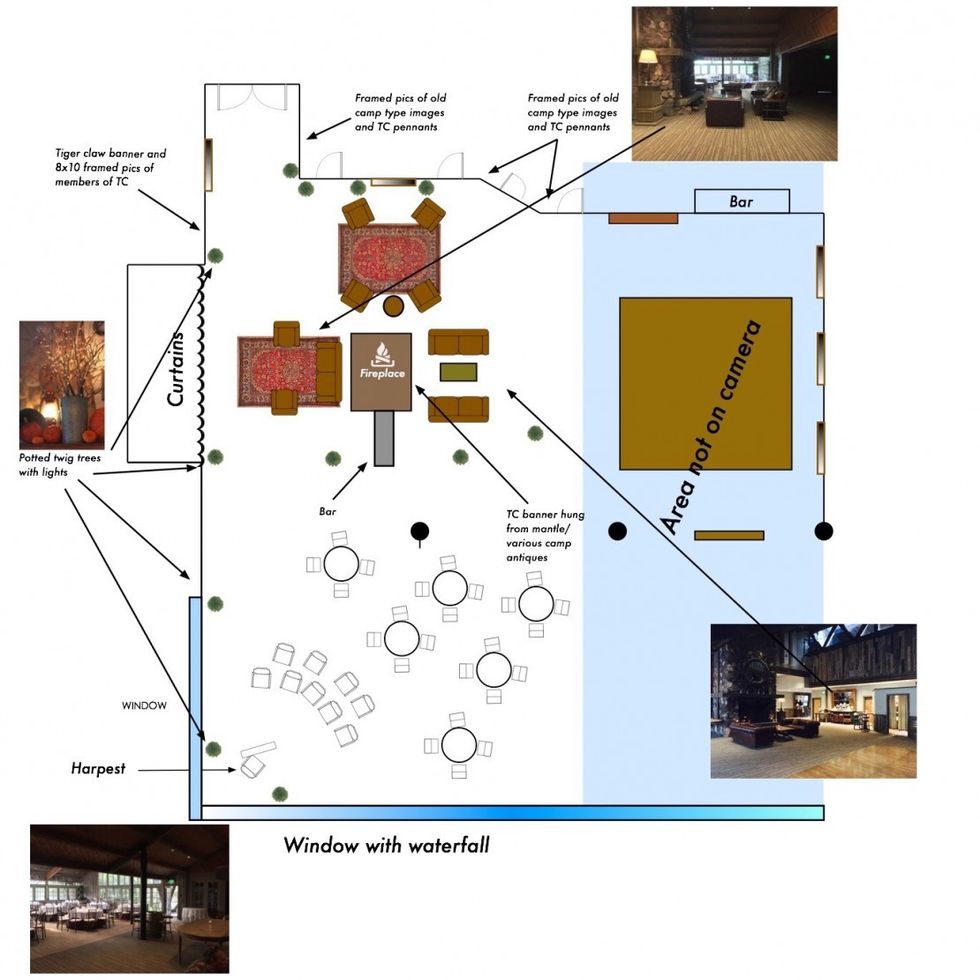
NFS:Last question: what was your favorite scene?
Atkinson: One of my favorite scenes may have been the easiest, in a weird way. It was with Kristen Wiig in Tiger Claw. We were supposed to shoot something like 12 pages of Paul Rudd that day, and we were just scrambling. We were setting up at the fireplace with two cameras, and I think we sent Frank with our B-camera down to get Kristen as she started her song.
We had 24mm-290mm on the other two cameras, setting up for the next scene on the couches, and I think it might have been the genius of our C-camera operator, Amanda Treyz, who just swung the lens around and landed it on Kristen with the 290mm completely across the room. Neal on A-camera followed suit—it was just that kind of day—and then Kristen did her thing. We had all three cameras on her with no rehearsal or anything. It was just “action!” and she does that dance, and the magic was immediate. [Laughs] It was amazing.

 No Film School's coverage of
No Film School's coverage of 









